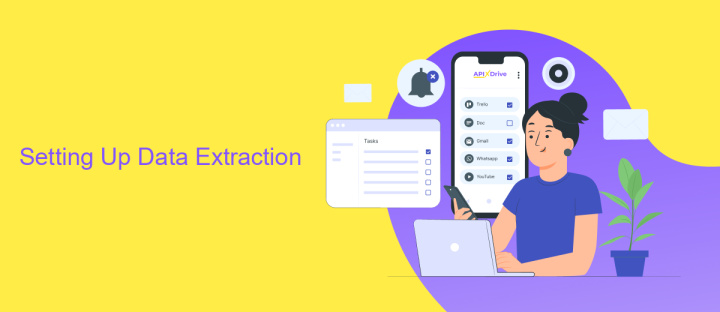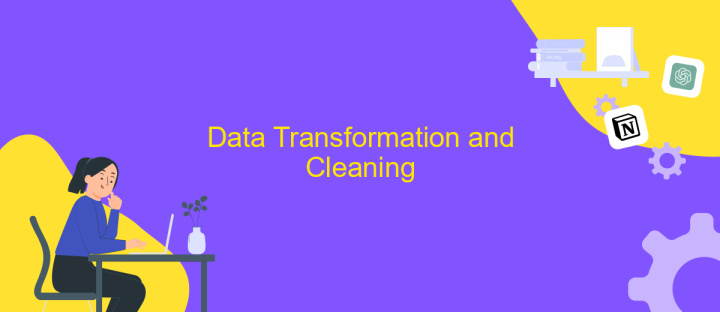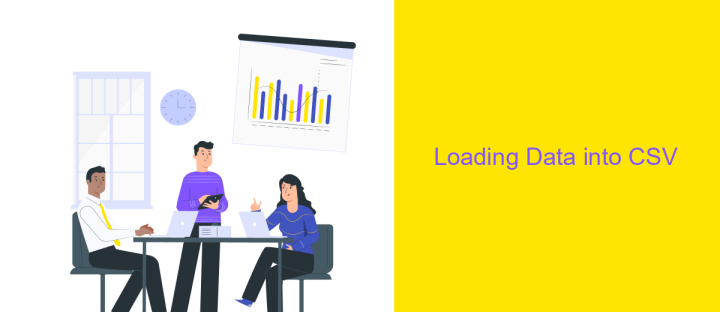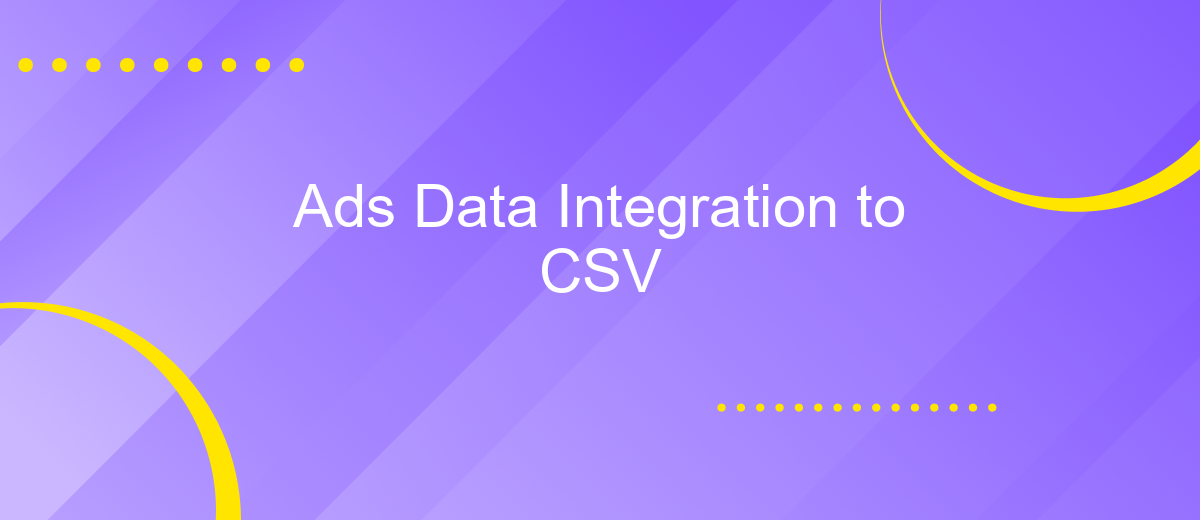Ads Data Integration to CSV
Integrating ads data into CSV format is a crucial step for businesses aiming to streamline their marketing analytics. This process allows for efficient data handling, facilitating better decision-making and performance tracking. By converting complex ad metrics into a universally accessible format, companies can enhance their data analysis capabilities, ensuring that insights are both actionable and easily shared across teams.
Introduction
In the digital age, businesses rely heavily on data to drive their marketing strategies and make informed decisions. One crucial aspect of this data-driven approach is the integration of advertising data from various platforms into a consolidated format, such as CSV. This process not only streamlines data management but also enhances the accuracy and efficiency of data analysis.
- Centralized data management
- Improved data accuracy
- Enhanced analytical capabilities
- Time-saving automation
Integrating ads data into CSV format allows businesses to unify disparate data sources, making it easier to perform comprehensive analysis and generate actionable insights. By leveraging this approach, companies can optimize their advertising campaigns, track performance metrics more effectively, and ultimately achieve better ROI on their marketing investments.
Setting Up Data Extraction

To begin setting up data extraction for your ads data, the first step is to identify the platforms from which you need to extract data. Common platforms include Google Ads, Facebook Ads, and LinkedIn Ads. Once you have identified these platforms, you will need to access their APIs to retrieve the necessary data. Most advertising platforms provide detailed documentation and developer tools to help you get started with their APIs. Ensure you have the required API keys and permissions set up for smooth data extraction.
For a more streamlined and automated process, consider using integration services like ApiX-Drive. ApiX-Drive allows you to connect various advertising platforms and automate data extraction without the need for extensive coding. By configuring ApiX-Drive, you can easily set up workflows to extract data at regular intervals and export it directly to CSV files. This not only saves time but also reduces the risk of manual errors, ensuring your data is accurate and up-to-date.
Data Transformation and Cleaning

Data transformation and cleaning are crucial steps in preparing ads data for integration into a CSV file. These processes ensure that the data is accurate, consistent, and ready for analysis. By transforming and cleaning the data, you can eliminate errors, handle missing values, and standardize formats, making the data more reliable and useful.
- Remove duplicates: Identify and delete any duplicate records to avoid redundancy.
- Handle missing values: Replace or impute missing data to maintain dataset integrity.
- Standardize formats: Ensure all data follows a consistent format for easier analysis.
- Correct errors: Identify and rectify any inaccuracies or inconsistencies in the data.
- Normalize data: Adjust values measured on different scales to a common scale.
Once the data has been transformed and cleaned, it can be seamlessly integrated into a CSV file. This structured and refined data is now ready for further analysis and reporting, providing valuable insights into advertising performance. Proper data transformation and cleaning not only enhance data quality but also improve the overall efficiency of the data integration process.
Loading Data into CSV

Loading data into a CSV file is a crucial step in the process of integrating ads data. This involves extracting the necessary information from various ad platforms and converting it into a structured format that can be easily analyzed and shared. The CSV format is widely supported and allows for seamless integration with other tools and software.
To begin, ensure that you have access to the data sources and the required permissions to extract the data. Utilize APIs provided by ad platforms such as Google Ads, Facebook Ads, and others to fetch the data. Once the data is retrieved, it needs to be cleaned and transformed to match the desired CSV structure.
- Extract data from ad platforms using APIs.
- Clean and transform the data to ensure consistency.
- Format the data into rows and columns suitable for CSV.
- Export the structured data to a CSV file.
After exporting the data to a CSV file, it's essential to validate the file to ensure that all data points have been correctly captured and formatted. This step helps in maintaining data integrity and ensures that the CSV file can be effectively used for further analysis or reporting purposes.


Conclusion
Integrating ads data into CSV format provides businesses with a streamlined method for analyzing and managing their advertising efforts. This process enhances data accessibility, allowing for more informed decision-making and efficient performance tracking. By converting complex ad metrics into a universally accepted format like CSV, organizations can easily share and manipulate data across various platforms and teams.
Tools like ApiX-Drive simplify the integration process by offering automated solutions that connect different ad platforms and export data directly into CSV files. This not only saves time but also minimizes the risk of human error. Utilizing such services ensures that businesses can maintain up-to-date and accurate records, ultimately driving better marketing strategies and improved ROI. As the digital advertising landscape continues to evolve, efficient data integration remains a critical component for success.
FAQ
How can I export my ads data to a CSV file?
What kind of data can be included in the CSV export?
Can I automate the process of exporting ads data to CSV?
What are the benefits of integrating ads data into a CSV file?
How often should I export my ads data to CSV?
Apix-Drive is a universal tool that will quickly streamline any workflow, freeing you from routine and possible financial losses. Try ApiX-Drive in action and see how useful it is for you personally. In the meantime, when you are setting up connections between systems, think about where you are investing your free time, because now you will have much more of it.

